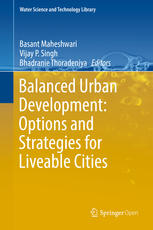

Most ebook files are in PDF format, so you can easily read them using various software such as Foxit Reader or directly on the Google Chrome browser.
Some ebook files are released by publishers in other formats such as .awz, .mobi, .epub, .fb2, etc. You may need to install specific software to read these formats on mobile/PC, such as Calibre.
Please read the tutorial at this link: https://ebookbell.com/faq
We offer FREE conversion to the popular formats you request; however, this may take some time. Therefore, right after payment, please email us, and we will try to provide the service as quickly as possible.
For some exceptional file formats or broken links (if any), please refrain from opening any disputes. Instead, email us first, and we will try to assist within a maximum of 6 hours.
EbookBell Team

4.4
22 reviewsThis book provides a unique synthesis of concepts and tools to examine natural resource, socio-economic, legal, policy and institutional issues that are important for managing urban growth into the future. The book will particularly help the reader to understand the current issues and challenges and develop strategies and practices to cope with future pressures of urbanisation and peri-urban land, water and energy use challenges. In particular, the book will help the reader to discover underlying principles for the planning of future cities and peri-urban regions in relation to: (i) Balanced urban development policies and institutions for future cities; (ii) Understanding the effects of land use change, population increase, and water demand on the liveability of cities; (iii) Long-term planning needs and transdisciplinary approaches to ensure the secured future for generations ahead; and (iv) Strategies to adapt the cities and land, water and energy uses for viable and liveable cities.
There are growing concerns about water, food security and sustainability with increased urbanisation worldwide. For cities to be liveable and sustainable into the future there is a need to maintain the natural resource base and the ecosystem services in the peri-urban areas surrounding cities. This need is increasing under the looming spectre of global warming and climate change.
This book will be of interest to policy makers, urban planners, researchers, post-graduate students in urban planning, environmental and water resources management, and managers in municipal councils.